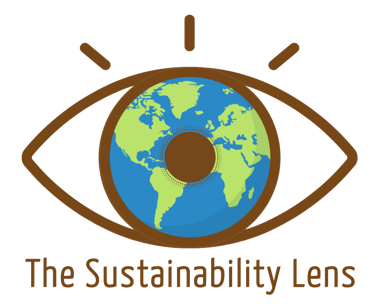The Sustainability Lens is a 501(c)(3) nonprofit organization.
Fast Fashion: The Hidden Costs of Your Closet
Claire Shriber
6/29/20253 min read


There’s nothing quite like the excitement of finding a new shirt or putting on a fresh pair of pants. Fashion serves as an important form of self-expression for individuals around the globe. Today, we have access to an amazing variety of styles and trends. However, many of us may not fully understand how our clothes are made and the impact they have on the environment.
What is Fast Fashion?
The global fashion industry was valued at $1.7 trillion in 2023. The overwhelming urge to buy and discard has woven fast fashion into the fabric of daily life for many. But what exactly is fast fashion?
Fast fashion is inexpensive, mass-produced clothing created quickly to bring new designs to the market within days. These garments are designed for short-lived enjoyment and are often discarded after only a handful of wears. The rapid production cycles, fueled by consumer demand for the latest trends, have led to closets overflowing with clothes that rarely see the light of day before piling up in the trash.
Social media has dramatically shaped consumer behavior, especially when it comes to the rise of fast fashion. Seeing your favorite influencers with exciting haul videos, enticing discount codes, and vibrant promotional posts makes it hard not to get swept up in the rush to snag new outfits before they’re gone!
In today’s fashion landscape, countless brands boast about their sustainable offerings, but the reality is often more complicated. Some brands offer programs where customers can return their used clothing for recycling, but these efforts often don’t result in many clothes being recycled. There’s no universal standard for what “sustainable” really means, making many claims hard to trust. While some brands may genuinely prioritize eco-friendliness, the truth is that many shoppers still lean towards affordable, trendy pieces over sustainable alternatives.
The Costs of Fast Fashion
So what does this all mean for our planet? Alarmingly, three of every five garments produced end up in a landfill or are incinerated (destroyed through burning). The industry relies heavily on synthetic fibers such as polyester. Polyester is made from petroleum, which takes much longer to decompose than natural fibers. This not only leads to the creation of non-biodegradable waste (waste that is unable to be broken down into harmless products) but also releases harmful microplastics into our oceans. Additionally, toxic dyes used in textile production can contaminate our water sources. Greenhouse gas emissions from textile production are estimated at 1.2 billion tons per year—more than the emissions of all international flights and ships combined.
In addition to the environmental harm fast fashion has, it also leads to many societal issues. The workers in the fast fashion industry often face unsafe working conditions and low wages. Most fast fashion production happens in countries where labor laws are weak, especially in the Global South. The Rana Plaza disaster in 2013 is a tragic example of this: a garment factory in Bangladesh collapsed, killing more than 1,100 workers. This event highlighted just how dangerous these workplaces can be. Additionally, the complex web of global supply chains means that many retailers don’t know what’s really happening in the factories that make their clothes, and are not aware of the poor conditions their workers face. The desire to make inexpensive clothing and increase profits leads to a demand for cheap labor and unsafe working conditions.
Make a Difference
Fast fashion’s popularity, particularly among young shoppers, is driven by its affordability and the constant availability of new styles. While sustainable fashion is growing, changing the mindset of fast fashion consumers—especially younger generations—remains difficult. Although it seems challenging to make a difference in a world of fast fashion, as a consumer, you can make a difference.
Here are some tips to help the environment and reduce fast fashion:
🔎Quality Over Quantity: Invest in higher-quality clothing that lasts longer instead of buying cheap items that wear out quickly.
👕Thrift Shopping: Give clothing a second life by shopping at thrift stores, which helps reduce the demand for new production.
🌱Support Sustainable Brands: Look for brands that prioritize sustainability and transparency in their supply chains. Take the time to research brands before making a purchase.
🪡Care for Clothes: Mend or alter your clothes instead of discarding them. Wash clothing only when necessary, and air-dry your clothes to extend their lifespan.
📣Advocate for Change: Get involved in campaigns that promote transparency in the fashion industry and improve labor laws. Educate yourself and others about these issues.
✂️ Repurpose: If you enjoy crafting, consider turning your old clothes into something new and useful!
♻️Reduce Overall Consumption: Make a small collection of clothing that you can mix and match for various occasions.
🪩Rent Clothes: For special occasions, consider renting clothes instead of buying something you'll only wear once.
Let’s choose smart and sustainable fashion options to create a better future for our planet and its people!
